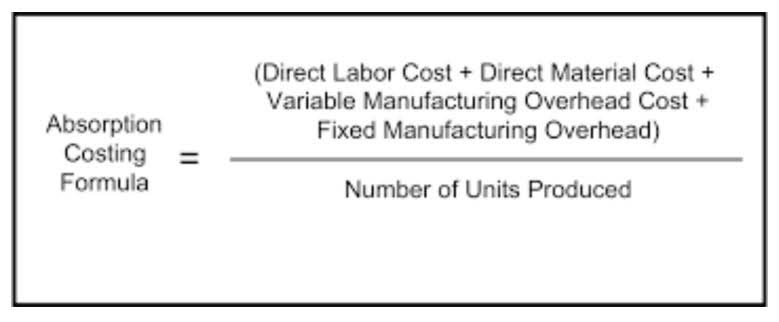
These stakeholders reflect on the relationship between program expenses and funding costs in a non-profit organization. They want to know how the supporting expenses of a company influence and control its programs. The statement of functional expenses is a critical tool for nonprofits, detailing their expenses across various functional categories. It provides an insightful lens into how an organization manages its finances, ensuring transparency, accountability, and strategic retained earnings allocation of resources.

What are the benefits of classifying functional accounting?
For example, a small organization that doesn’t have departments and whose employees perform a variety of functions probably wouldn’t want to use a headcount method to allocate functional expenses. Aside from accounting regulations that require a SOFE in some form, it’s a useful tool for the organization to visualize how their resources are being used. As mentioned previously, most of an organization’s expenses should be devoted to its programs, since those are what will help the organization work towards its mission. If a not-for-profit’s SOFE is showing this isn’t the case, it’s a good starting point for a discussion on why this may be.
Statement of Financial Position:

If there is uncertainty as to when an expense is matched or is used up, the amount spent should be reported as an expense in the current statement of functional expenses period. Program expenses (or program services expenses) are the amounts directly incurred by the nonprofit in carrying out its programs. For instance, if a nonprofit has three main programs, then each of the three programs will be listed along with each program’s expenses.
- A statement of functional expenses is unique to nonprofits and does not have a parallel report from traditional businesses.
- Part 9 of our 990 series covers everything you need to know about the statement of functional expenses.
- We are now ready to present examples of the statement of financial position and the statement of activities.
- To do that, we’ll follow the activities of a nonprofit organization called Home4U, a daytime shelter for adults.
- This statement records all the expenses, costs, and revenue generated by the nonprofit organization in a given period of time.
Support Our Site & Podcast
- To create your report with the template, list all your natural expense categories in the first column.
- Your organization can save time, energy, and money by outsourcing these tasks to an accounting firm that specializes in working with nonprofits, like Jitasa.
- Do not include expenses on line 24 that fit into any of the categories on lines 1 to 23.
- This statement actively provides insight into the effective use of resources to fulfill the organization’s mission.
- Organizations undergoing an annual nonprofit audit must present expenses by functional areas in financial statements.
- In essence, it reveals how a nonprofit has decided to allocate its available funds in order to fulfill its mission.
- The statement of functional expenses is described as a matrix since it reports expenses by their function (programs, management and general, fundraising) and by the nature or type of expense (salaries, rent).
This report would more accurately be called a Statement of Activities by Class (function) or a Line Items by Activity Report. The functional areas included in the statement of functional expenses typically include programs, fundraising, and management and administration. This presentation appears as a matrix, where each functional area is listed across the top row of the report, and the expense types are listed down the left side. Understanding the statement of functional expenses is necessary for running a successful nonprofit. It promotes trust and transparency, effectively using the donated funds. Additionally, it provides valuable insights into cost allocation across various areas, aiding in planning and decision-making.

This allocation method focuses on space and square footage as the criteria to determine the expenses of a nonprofit business. In order to rent office space, the nonprofit business must pay for rent and utilities. Looking at the area, the organization sees how the total square footage of the office space compares to the number of offices occupied by specific departments. For example, depending on how much of the office space is used by the fundraising department, the organization can see how much of its rent expenses should be allocated toward the fundraising department.
Nonprofit accountants need to know how to help their clients create a statement of functional expenses. If an organization is set up with adequate nonprofit accounting software, the process of creating a statement of functional expenses can be quite simple. When most people think about nonprofit organizations, they do not think about the accounting needs and financial reports needed to track the spending, earnings, and economic trends of the corporation. We tend to think about nonprofit businesses as Food Truck Accounting non-financial businesses, which is a colossal error.
- The statement of functional expenses, in terms of dollars and cents, shows what was accomplished (programs) and how (management and general and fundraising).
- Unlike for-profit businesses that exist to generate profits for their owners, nonprofit organizations exist to pursue missions that address the needs of society.
- The costs of salaries of employees working on raising funds go into this account.
- In some cases, the cost spent for fundraising has to be counted under the program account.
- The natural expense categories are based on the type of expense incurred.
- This allows organizations to proactively manage their finances, identify trends, and make informed decisions about resource allocation.
Manage my company’s expenses (1-9 employees)
The Statement Of Cash Flows reports about all cash flows to and from Nonprofit organizations. The statement reveals how much revenue the programs and activities of the organization produce and utilize. Fees earned from providing services and the amounts of merchandise sold. Under the accrual basis of accounting, revenues are recorded at the time of delivering the service or the merchandise, even if cash is not received at the time of delivery.

